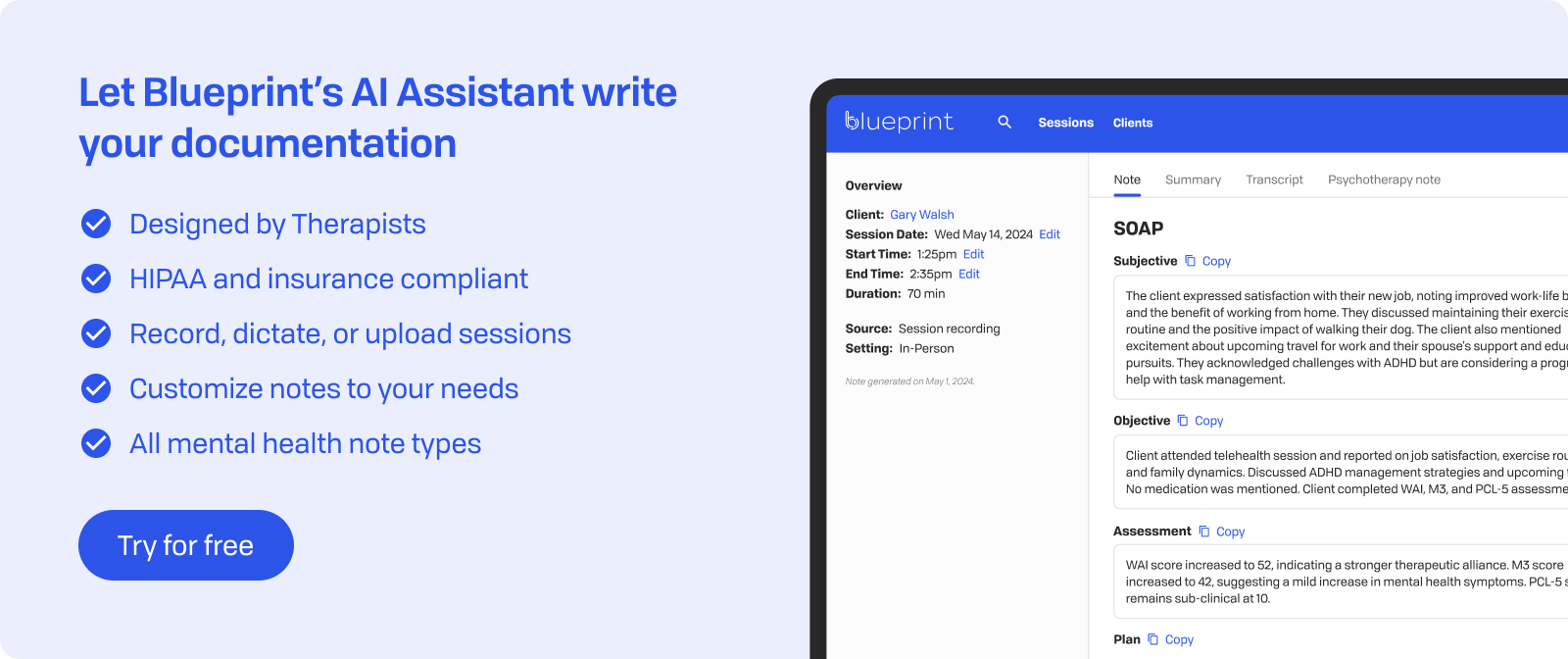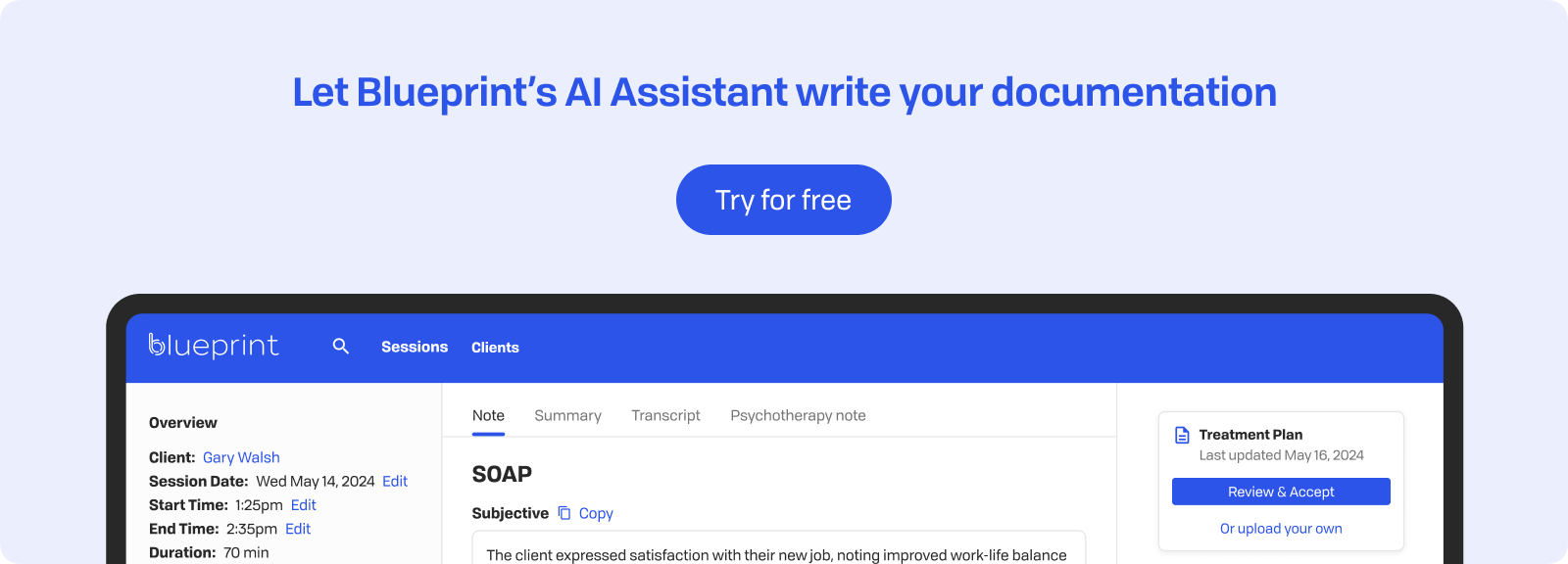
In Brief
The words we use in therapy sessions hold significant weight, underscoring the power of words. Every phrase, descriptor, and label shapes the therapeutic relationship in subtle but impactful ways. Language does more than convey information—it shows respect, understanding, and communicates our core beliefs about the people we serve.
Think about how a client might feel hearing "a person with psychosis" compared to "a psychotic person." The difference seems minor, but it reflects a deeper understanding of stigma associated with mental health challenges. Our linguistic choices can either reinforce harmful stereotypes or help dismantle them, one conversation at a time.
This shift leads to meaningful discussions about person-first language in clinical settings. Grasping these principles isn't about being politically correct or following trends. It’s about creating therapeutic spaces where clients feel seen as whole human beings, not defined by their diagnoses or challenges.
Defining Person First Language in Clinical Work
Person-first language places the individual before their condition, emphasizing their humanity over their diagnosis. Instead of saying "a disabled child," it is recommended to say "a child with a disability." Rather than "a schizophrenic," the person-first term used is "a person with schizophrenia." This approach acknowledges that people are multidimensional beings whose identities extend beyond any single characteristic or challenge.
In contrast, identity-first language places the condition or characteristic first, as in "disabled person" or "bipolar patient." While person-first language aims to separate the person from their condition, identity-first language acknowledges that some individuals view their conditions as integral parts of their identity. This is common in communities like the Deaf community or among many autistic self-advocates who prefer "autistic person" over "person with autism."
Our word choices reveal underlying attitudes about how we view our clients and their experiences. When we consistently use language that reduces people to their diagnoses, we risk perpetuating a medical model that sees clients as problems to be fixed. Person-first language challenges us to see the whole person—their strengths, interests, relationships, and aspirations—not just their symptoms or struggles.
Language forms the foundation for therapeutic trust because it shows respect and understanding from the very first interaction. Clients quickly notice whether their therapist sees them as complex individuals or merely as a collection of symptoms. When we use person-first language, we communicate that we value our clients' full humanity and recognize their capacity for growth, change, and self-determination.

The Role of Language in Reducing Stigma
Labels carry weight that extends far beyond their dictionary definitions. When we refer to someone as "an addict" or "a borderline," we reduce their entire identity to a single aspect of their experience. This linguistic reduction reinforces shame and marginalization, creating barriers to healing that persist long after the words are spoken.
The way therapists phrase observations and feedback directly impacts how clients view themselves. Consider the difference between saying "you're being manipulative" versus "I notice you're trying to get your needs met in ways that might push others away." The first statement labels the person using a negative term; the second describes behavioral observations while maintaining respect for their humanity. These subtle shifts in language can either reinforce negative self-concepts or open pathways to growth and a stronger therapeutic alliance.
Person-first language serves as a powerful tool for restoring dignity and empowering clients:
- Reduces internalized stigma: Helps clients see themselves as more than their diagnosis
- Encourages treatment-seeking: Creates a more welcoming therapeutic environment
- Promotes recovery: Frames mental health challenges as experiences rather than identities
- Challenges stereotypes: Disrupts harmful narratives about mental illness
When we choose our words carefully, we participate in breaking down the stigma that keeps so many from seeking help. This conscious use of language transforms therapy from a place of judgment to a space of healing and possibility.
Navigating Person-First vs Identity-First Preferences
While person-first language often serves as a good starting point, respecting individual preferences matters more than sticking to strict rules. Some clients want to be seen as separate from their conditions, while others see their experiences as integral to their identity. The best approach is to ask rather than assume.
Starting this conversation early in treatment shows respect and cultural understanding. You might include preference discussions during your intake process with questions like:
- "How would you like me to refer to your experiences?" Encourages open dialogue without assumptions.
- "Some people prefer 'person with autism' while others prefer 'autistic person.' What feels right for you?" Validates both choices.
- "I want to use language that feels respectful to you. Can you help me understand your preferences?" Puts client autonomy at the forefront.
Certain communities have collectively chosen identity-first language as a form of empowerment and pride. Members of the neurodivergent community often prefer "autistic person" to challenge negative narratives. Many Deaf individuals reject person-first language entirely, viewing deafness as a cultural identity rather than a disability. In these contexts, person-first language might seem dismissive or unaware of community values.
The therapeutic relationship grows when we stay adaptable and responsive. Note client preferences in your records and revisit them periodically, as perspectives can change throughout treatment. What truly matters is showing that you see and respect your clients as the experts on their own experiences.

Applying Person First Language in Therapy Sessions
Changing stigmatizing labels into affirming language requires careful practice and attention to detail. Consider these common reframes that honor the whole person:
- "Person with substance use disorder" instead of "addict" or "alcoholic"
- "Person experiencing homelessness" rather than "homeless person"
- "Client with bipolar disorder" not "bipolar client"
- "Person who uses a wheelchair" instead of "wheelchair-bound"
- "Individual with anxiety" rather than "anxious person"
These shifts extend beyond verbal communication into written documentation. During intake, frame questions to reflect person-first principles: "Tell me about your experience with depression" rather than "How long have you been depressed?" In progress notes, write "Client discussed their recovery from alcohol use disorder" instead of "Alcoholic client reported sobriety."
Treatment planning benefits from this approach too. Goals should emphasize growth and capability: "Develop coping strategies for managing anxiety symptoms" rather than "Fix client's anxiety problem." This framing acknowledges challenges while maintaining hope and agency.
When communicating with multidisciplinary teams, model respectful language consistently. In case consultations, say "I'm working with someone who has been diagnosed with schizophrenia" rather than "I have a schizophrenic patient." This sets a professional standard that influences how colleagues think and speak about shared clients.
Remember that person-first language fits naturally into various therapeutic modalities. CBT practitioners can reshape negative self-talk using respectful terminology. DBT therapists foster self-management skills through affirming language. ACT approaches benefit from terminology that separates the person from their experiences, supporting thought defusion and commitment to valued actions.

Challenges and Barriers for Therapists
Implementing person-first language consistently faces real-world obstacles that require awareness and intentional effort to overcome. Many healthcare systems and insurance companies still use outdated terminology in their forms, diagnostic codes, and documentation requirements. You might find yourself required to use labels like "borderline patient" or "schizophrenic" in official paperwork, creating tension between institutional demands and therapeutic best practices.
Changing ingrained language habits proves challenging even for well-intentioned therapists. Years of training and practice using certain terms can make person-first language feel awkward initially. Common habits that need retraining include:
- Diagnostic shortcuts: Using "the anxious client in room 3" instead of "the client with anxiety in room 3"
- Clinical jargon: Defaulting to medical model language during team meetings
- Unconscious biases: Letting stigmatizing terms slip during stressful moments
- Documentation patterns: Writing notes that emphasize pathology over personhood
Cultural contexts add another layer of complexity. Some communities have specific language preferences that differ from Western person-first conventions. For instance, certain cultures view mental health challenges through spiritual or familial lenses, using terminology that doesn't translate directly. Working with interpreters requires extra vigilance, as direct translations might not capture the respectful intent of person-first language.
Improvement involves regular self-reflection, peer accountability, and patience with the learning process. Consider recording yourself during mock sessions to catch language patterns you might miss in the moment. Create reminder systems in your documentation templates. Most importantly, stay curious about how language evolves across different cultural and clinical contexts.

Strengthening Cultural Humility Through Language
Cultural humility changes person-first language from a rigid rule into a flexible way to connect. This approach recognizes that no single linguistic framework fits every client's cultural context or personal identity. Instead of trying to master a fixed set of terms, therapists commit to continually learning how language shapes meaning across different communities.
Inclusive communication involves adapting your language based on each client's unique cultural background and preferences:
- Ask about preferred terminology: Different cultures view mental health uniquely, requiring adaptable vocabulary.
- Learn community-specific language: Some groups have their own affirming terms that differ from mainstream conventions.
- Notice power dynamics: Language choices can either reinforce or challenge cultural hierarchies in the therapeutic relationship.
- Stay curious about meaning: The same words carry different weight across cultural contexts.
Person-first language connects to broader cultural competence through its emphasis on seeing the whole person. Practicing linguistic flexibility shows respect for diverse worldviews and challenges our assumptions about identity and experience. This openness allows clients to share their authentic selves without conforming to Western therapeutic norms.
Peer accountability strengthens this practice through regular consultation and feedback. Create opportunities to discuss language choices with colleagues, especially those from different cultural backgrounds. Reflective practice might include journaling about moments when your default language didn't fit a client's cultural framework, or seeking supervision specifically focused on culturally responsive communication. These practices help person-first language grow from a technique into a genuine expression of cultural humility.
Key Points
Person-first language plays a vital role in reducing stigma and preserving client dignity in therapy. This approach acknowledges that people are more than their diagnoses, allowing room for healing and growth. Its impact goes beyond individual sessions—when therapists use respectful language, they influence societal views on mental health.
Effective use involves balancing established best practices with individual client preferences. While person-first language offers a helpful framework, some clients and communities prefer identity-first language to express pride and self-determination. The key is to ask rather than assume, then honor those preferences consistently throughout treatment.
Word choice affects every aspect of therapeutic work:
- Session dynamics: Language shapes how clients feel safe and understood
- Documentation: Respectful terminology in notes influences how other providers perceive clients
- Team communication: Using person-first language sets professional standards
- Advocacy efforts: Thoughtful language challenges systemic stigma
Mindful, respectful language strengthens the therapeutic alliance through shared emotional understanding. Research shows that matching language styles between therapist and client signals safety and builds trust—key elements for therapeutic change. This approach transforms therapy from a clinical interaction into a collaborative journey.
Commitment to person-first language reflects a deeper therapeutic stance: viewing clients as whole people deserving of respect, capable of growth, and worthy of dignified treatment. This perspective, expressed through careful word choices, lays the foundation for meaningful therapeutic relationships and lasting change.

How Blueprint can help streamline your workflow
Blueprint is a HIPAA-compliant AI Assistant built with therapists, for the way therapists work. Trusted by over 50,000 clinicians, Blueprint automates progress notes, drafts smart treatment plans, and surfaces actionable insights before, during, and after every client session. That means saving about 5-10 hours each week — so you have more time to focus on what matters most to you.
Try your first five sessions of Blueprint for free. No credit card required, with a 60-day money-back guarantee.























